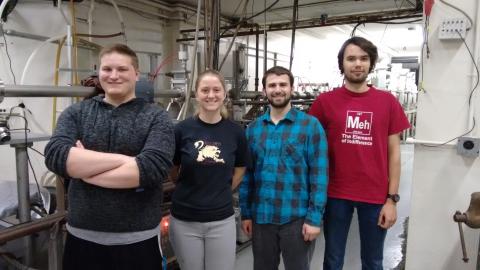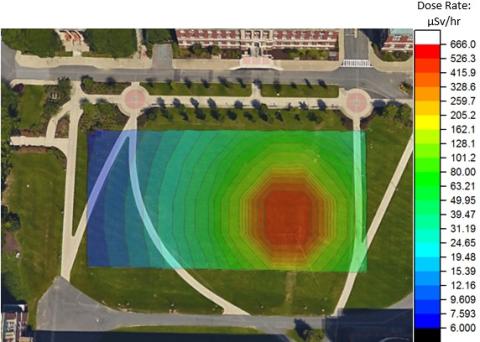The overview for this system is that it will consist of a mobile radiation detector that can store the ambient dose and location where that data was taken. This data will then be remotely transmitted to a base station which hold the mapping software which uses the data to populate a map of the area. The detector module itself will be delivered by an aerial drone and placed in the necessary location. The module itself will weigh approximately 0.9 kg and be capable of transmitting between 2 km, in a dense urban setting, to 22 km, in a rural setting, with a power plant being in the middle of this range.
Team: Edward Heffner, Renae Strum, Nicholas Wait, and Peter Kowal
Project Advisor: Prof. Yaron Danon

Project Motivation
In the case of a nuclear power plant accident, knowledge of the radiation levels in the surrounding area is a key factor in emergency response. A system of deployable detectors can be used to achieve a real-time map of radiation levels to supplement pre-existing stationary detectors or for use when stationary detectors become inoperable. This lead to the desire to design a mobile deployable detector system capable of measuring and then mapping dose rates for an area in real time around a nuclear power plant. This map can then be used to manage the exposure time of emergency radiation relief workers in the area. Ambient dose was chosen for detection as it can most accurately model the type of radiation the workers will be exposed to.

Project Description
The overview for this system is that it will consist of a mobile radiation detector that can store the ambient dose and location where that data was taken. This data will then be remotely transmitted to a base station which hold the mapping software which uses the data to populate a map of the area. The detector module itself will be delivered by an aerial drone and placed in the necessary location. The module itself will weigh approximately 0.9 kg and be capable of transmitting between 2 km, in a dense urban setting, to 22 km, in a rural setting, with a power plant being in the middle of this range.

Results and Accomplishments
The detection itself will be accomplished by a LND 50324 ion chamber operating in current mode. It was determined that this would be best as it will average the radiation exposure incident on the detector and promote a more stable model of the area. The power for the detector module will will allow it to stay in position for as long as 70 days with transmissions occurring once every minute.